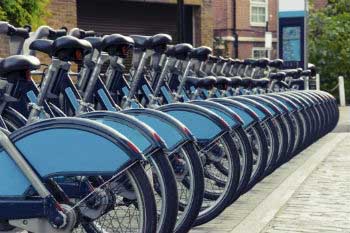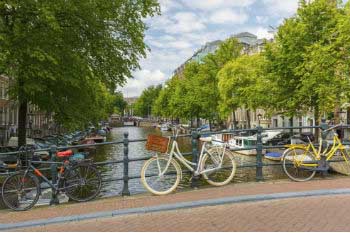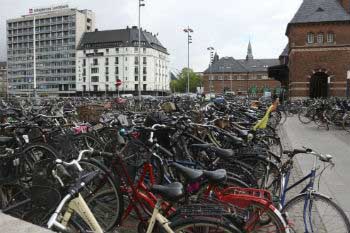Public bicycles have come to stay
A radical change in some life habits becomes necessary, such as the means of transport used in cities.Air pollution in cities causes 7 million deaths each year around the world –according to WHO. According to the UN, C02 emissions into the atmosphere have also increased, so a radical change in some life habits becomes necessary, such as the means of transport used in cities.

Governments have joined this urgent and necessary change by taking different measures, such as installing and improving public bicycles services (also known as shared bicycles), as the best form of sustainable mobility.
In 2013 bicycles sales exceeded that of cars in 23 of the 27 EU member countries. Having these figures, it is clearer that people turn more and more to this practical and healthy form of transport for their usual journeys.
The crisis may have been one of the reasons this form of transport has boomed again around the world, but this is also because societies are increasingly aware of an urgent need for a more sustainable mobility; reducing the carbon footprint, which helps to curb climate change and reduce pollution levels in cities.
How do public bicycles work?
Cities set a bike-sharing system in motion for their temporary use and you usually take a bicycle at one point and can return it at another.
In some cities it is a free service whereas in others you pay for the time you used it or pay a fee. Some cities have an electrical bicycle service.
Advantages of public bicycles

1. It helps many people approach bicycles as a means of transport, try them for a while and decide to make them their usual form of transport.
2. It helps traffic calming –the more bicycles are used in cities, people drive more carefully. And this benefits us all.
3. They do not pollute, helping reduce the carbon footprint and pollution, which is greater and greater in big cities.
4. It helps us to save up, as they are much more economical than driving private cars or even using public transport.
5. It contributes to improving our physical health as we are also doing exercise.

How present is this service in the world?
It had its origins in Bycyclen in Copenhagen city in 1995. Bicycles were provided on a large scale and included advertisements, you paid a deposit and were allowed unlimited access to them. At present, in this city 26% of urban journeys are made on bikes.
In Spain it was not until 2004 when the bike-sharing system came, public and totally free, together with Vitoria city. According to a survey by the Earth Policy Institute (EPI), Spain is now the country in the world where more cities have this service, with 132 programmes, and the third one in number of bicycles, with over 26,000, outstripping the Dutch and Danish together. Despite this, the actual use of this service is rather reduced.

In South America, the first two bike-sharing programmes were launched in Rio de Janeiro and Santiago de Chile in 2008. According to the survey Biciudades 2013, the Santiago population is at the top of their use with a 3%, as well as Mexico City. Bogota is at the top of those Latin American cities that provide exclusive lanes for cyclists, with a total of 376 km designed for their use.
Asia, which embodies the fastest-growing market these days, has programmes in China, South Korea and Taiwan.
The public-bicycle system keeps growing without stopping; in 2011, this service was estimated to be implemented already in 165 cities around the world with 237 thousand bicycles on the road.
And you, when do you use your public bicycle? Tell us about your experience in your city!
Did you like this article? Receive our next publications through our newsletter by subscribing here.



